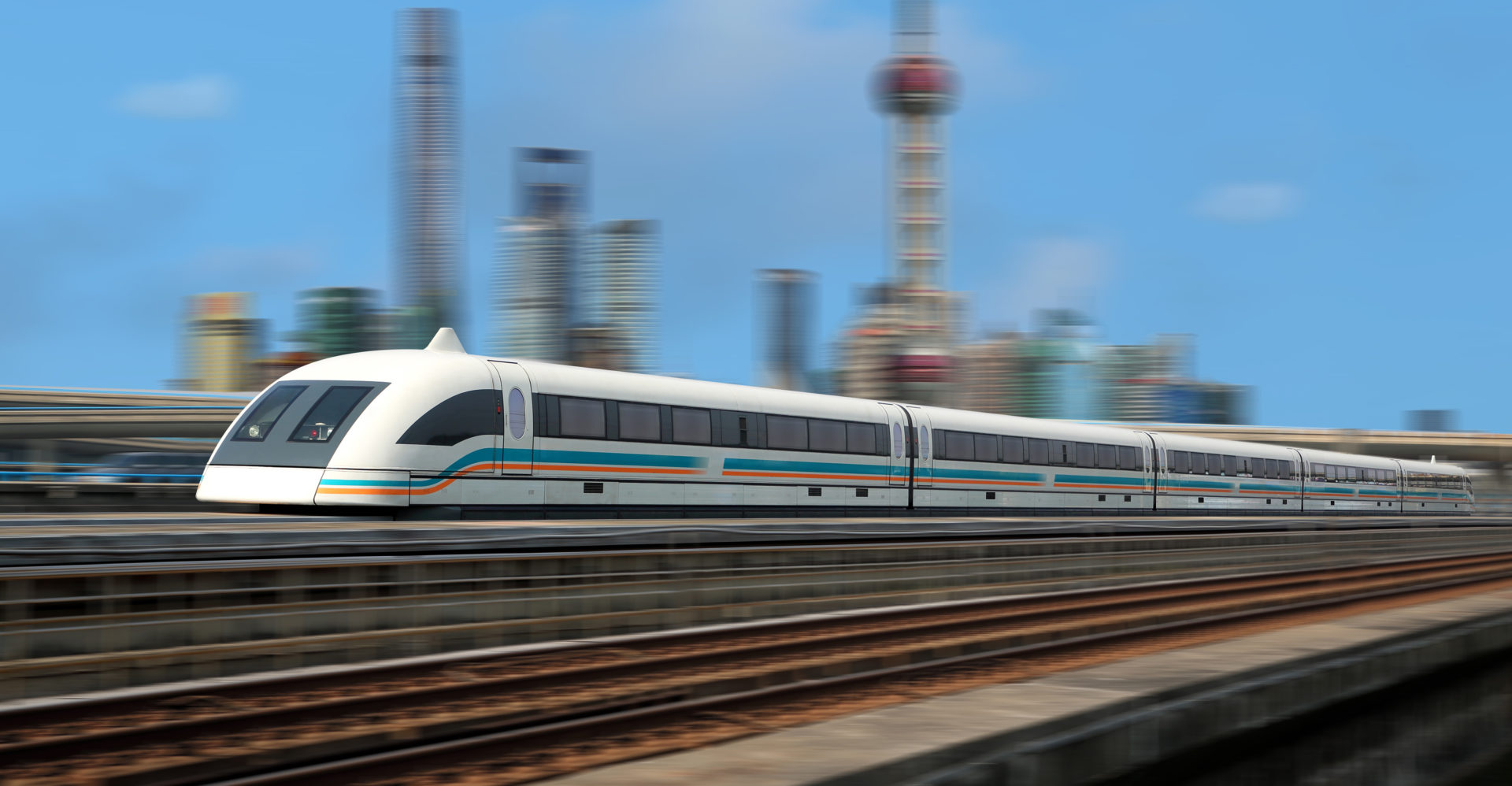
August 2020
3 Min Read
Maglev – The Transportation of the Future
This article is the first of several articles on “Stopping a Train.”
We will consider the following: safety, cost of operation, adaptability, comparative cost of construction, the economic benefits to selling the technology to the world, the jobs in engineering and construction, the improved efficiency of the region, what it means in terms of air pollution.
To understand the nature of the rail tragedies that we have seen over many years, we have to understand the basic physics of the current technology.
Whenever you put any vehicle into motion there is a resistance to stopping. The greater the mass, the greater the resistance to stopping, and a train has enormous mass. We use friction to absorb the energy that is contained in the moving train. When the engineer applies the brakes the brake shoes are forced against the turning wheels. The problem is that the when the wheels lock-up they continue to slide down the track. Any dust, oil, water, and even sand act as a lubricant.
We have been sitting on a technology that overcomes the physics. The Maglev transportation system allows the train to stop in the same distance as an automobile, which by the way is quite good.
An automobile traveling at 60 miles per hour can make a quick controlled stop on dry pavement within 188 feet. A Maglev can stop as effectively as a passenger car, about 188 feet. However, a conventional train at 60 MPH needs 750 feet. That means that if the engineer can see the vehicle on the track, he can stop the Maglev but not a conventional train.
The Maglev’s stopping ability is unimpaired by weather conditions or oils or debris on the track. The braking system does not rely on friction. The magnetic fields that propel the vehicle forward are the very same forces that stop the train only in reverse. When the polarity is reversed it wouldn’t matter if the Maglev track (the guideway) was covered with ice or snow. Not only is the stopping distance very short, it never varies.
There is an energy bonus as well. Conventional trains rely on destroying kinetic energy by converting it to heat. The Maglev converts the kinetic energy back into electric power and reintroduces it back into the system. Ninety percent of the energy that is recovered is reintroduced into the system. That means that this remarkable efficient system does not waste the braking energy either.
To put this all into perspective we know what this technology can do in terms of safety and low-cost operation, but we haven’t even considered the human cost. This technology would have prevented every rail accident incident that I have examined in the last ten years.




















































